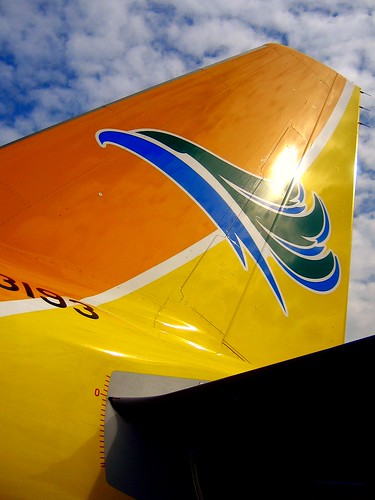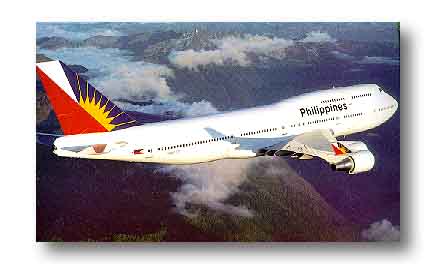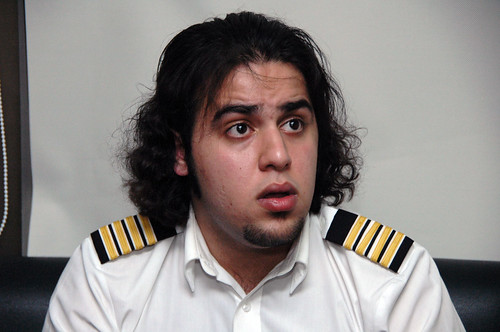 Airport restrictions hurting Boracay tourism By Daxim LucasPhilippine Daily Inquirer
Airport restrictions hurting Boracay tourism By Daxim LucasPhilippine Daily Inquirer

Flying to the world famous Boracay Island for a weekend getaway in one of its many resorts used to be a fast, convenient and affordable experience for hundreds of thousands of foreign and local tourists each year.
Up until the third quarter of last year, visitors could fly from Manila to nearby Caticlan airport in as little as 35 minutes, take a short ferry ride to the island’s white sand beaches, and check into a hotel room within an hour and a half of leaving the metropolis.
All this changed when aviation authorities imposed flight restrictions on Caticlan airport after a string of aircraft accidents and “near misses.” That left only high-end niche carrier Southeast Asian Airline as the sole operator to the gateway of Boracay.
More affordable flights operated by PAL Express, Cebu Pacific and Zest Air—all of which charged cheaper fare—had to be diverted to Kalibo Airport which is a two-hour land trip away from Caticlan.
“The effects of this flight diversions really hit the local tourism industry badly,” said Ike Guanio, who is the chief operating officer of Boracay’s sprawling Fairways and Bluewater Resort Golf and Country Club.
“At one point, [reservation] cancellations [for local resort hotels] reached as high as 70 percent,” he added. “We were all affected.”
In an interview with the Inquirer, Guanio explained that a large number of tourists who visit Boracay Island do so during weekends, flying in on Friday afternoons or Saturday mornings, and returning to Manila or Cebu on Sunday afternoons.
The limited operations of Caticlan airport—which forced most airlines to fly tourists in via Kalibo—had turned off many potential travelers, putting a dampener on the island’s multimillion-peso tourism industry.
“Time is precious for weekend tourists,” Guanio said. “They don’t want to spend half of Saturday getting to Boracay and half of Sunday getting out of Boracay.”
“Right now, it has become really inconvenient for people to come to Boracay, especially if they fly in via Kalibo,” he said, pointing to the approaching peak summer travel season. “We need Caticlan to resume operations to restore, or even improve, tourist traffic.”
Over the long term, what is needed is for Caticlan airport’s 900-meter runway to be extended to at least 1,800 meters for it to be able to accommodate the Airbus A320 aircraft.
For the short term, a 50-meter-high hill on one end of the runway has to be reduced in size. According to the Civil Aviation Authority of the Philippines (Caap), the hill prevents larger turboprop aircraft from flying in and out of the airport.
The challenge was taken up by the the Caticlan International Airport Development Corp. (CIADC), a consortium majority-owned by businessman George Yang, more famously known for bringing the McDonald’s fastfood chain to the country.
With a P2.5-billion bid, CIADC secured a 25-year build-operate-transfer (BOT) deal to extend the runway and build a new terminal for the airport.
Recently, however, the deal has come under intense attack from critics who claim that the airport expansion will adversely affect the environment on Boracay Island, which is separated form Caticlan by a deep channel.
In particular, critics of the deal have presented to the media one environment official who claimed that the development plan would eventually cause Boracay’s white sand beaches to be eroded.
In several interviews made with local stakeholders, however, another motive has emerged for the opponents of the Caticlan airport expansion: property speculation.
“There’s another group that’s pushing for the development of an international airport on Carabao Island,” said Aklan lawmaker Florencio Miraflores. “It’s just a proposal [at this point], but it’s being aggressively marketed as an alternative project.”
Along with other local officials, Miraflores believes that business—and not the environment—is the root of the opposition to the Caticlan airport expansion.
THE MAN accused of being behind the smear campaign against the expansion of the busy but undersized Caticlan airport is Boracay businessman and resort
owner Steve Tajanlangit.
He is one of the pioneer locators in the world-famous holiday destination
and owns large properties on the island, having recently sold one such prime piece of real estate to the Shangri-La Hotel group on which a posh resort now stands.
According to Boracay locals and government officials interviewed by the Philippine Daily Inquirer – many of whom know Tajanlangit personally, and thus spoke anonymously – the businessman has been at the forefront of efforts to stop the P2.5-billion expansion of the Caticlan airport.
Apart from trying to rally public opinion against the project, they also pointed to Tajanlangit as the instigator of a campaign in the local and national media, which revolves around environmental issues.
More importantly, Tajanlangit is being accused of opposing the Caticlan airport expansion because of his own plans to put up an international airport on nearby Carabao Island – on a large tract of land which he owns.
It is a charge Tajanlangit denies.
“They all say we’re against Caticlan airport,” the businessman said in an interview with the Inquirer. “Yes, we’re against it, but we’re not talking against it.”
Tajanlangit claims that leveling a 50-meter hill in Caticlan to make way for an extended runway will result in a “wind channel” that could potentially blow black sand from the mainland over to Boracay across the narrow strait, contaminating the island’s world-famous white sand.
He distanced himself, however, from the opinion issued by a local official of the Department of Environment and Natural Resources, which put forward this theory.
“I don’t even know that person,” he said.
To counter this argument, the George Yang-led Caticlan International Airport Development Corp. (CIADC) – backed by the Aklan provincial government – released copies of official DENR approvals certifying to the environmental soundness of the project.
“The channel is so deep and wide that there is no way the sand from Caticlan can reach Boracay,” said Aklan Representative Florencio Miraflores.
Tajanlangit did admit, however, that he wanted the alternative airport located on his Carabao Island property, which he said was a more ideal location than Caticlan.
“It’s not [land] speculation,” the businessman said. “That’s not true. We bought the land for the airport, yes. But we don’t have beachfront property. But we might, in the future.”
In fact, the area that Tanjanlangit wants to develop into an international airport has already been fenced in. He said he was just now waiting to seal funding deals with potential partners.
With the right partner, he said the new airport would be ready for operations by as soon as 2012.
Under aviation regulations, however, no two commercial airports are allowed to operate within 25 nautical miles of each other. This is to maintain minimum aircraft separation distances.
This was confirmed by Civil Aviation Administration of the Philippines director general Ruben Ciron, who said that Tajanlangit’s planned Carabao Island airport cannot coexist with Caticlan.
“It’s one or the other,” he said.
While the fight plays out, tourism
in Boracay continues to suffer.
In fact, resort operators interviewed by the Philippine Daily Inquirer said that the bulk of their foreign clients have been turned off by the poor transportation infrastructure chain.
“They all love Boracay,” said one manager, requesting anonymity because of personal ties with Tajanlangit. “But 70 percent of them tell me they will never come back here. It’s simply too much trouble.”
As far as CIADC is concerned, it recently received the approval from Malacañang to break ground on the Caticlan airport expansion, and is set to start reducing the height of the controversial hill today with President Gloria Macapagal-Arroyo leading groundbreaking rites.
But Tajanlangit remained defiant.
“We don’t even have to attack [the Caticlan project],” he said. “I’m willing to bet they can’t convert that into an international airport.”
Instead, the businessman – accused of trying to block the deal despite a potential conflict of interest situation – offered CIADC an alternative solution: “If they want, they can go into a joint venture deal with us.”
Meanwhile, the tourists and the local economy wait.






























